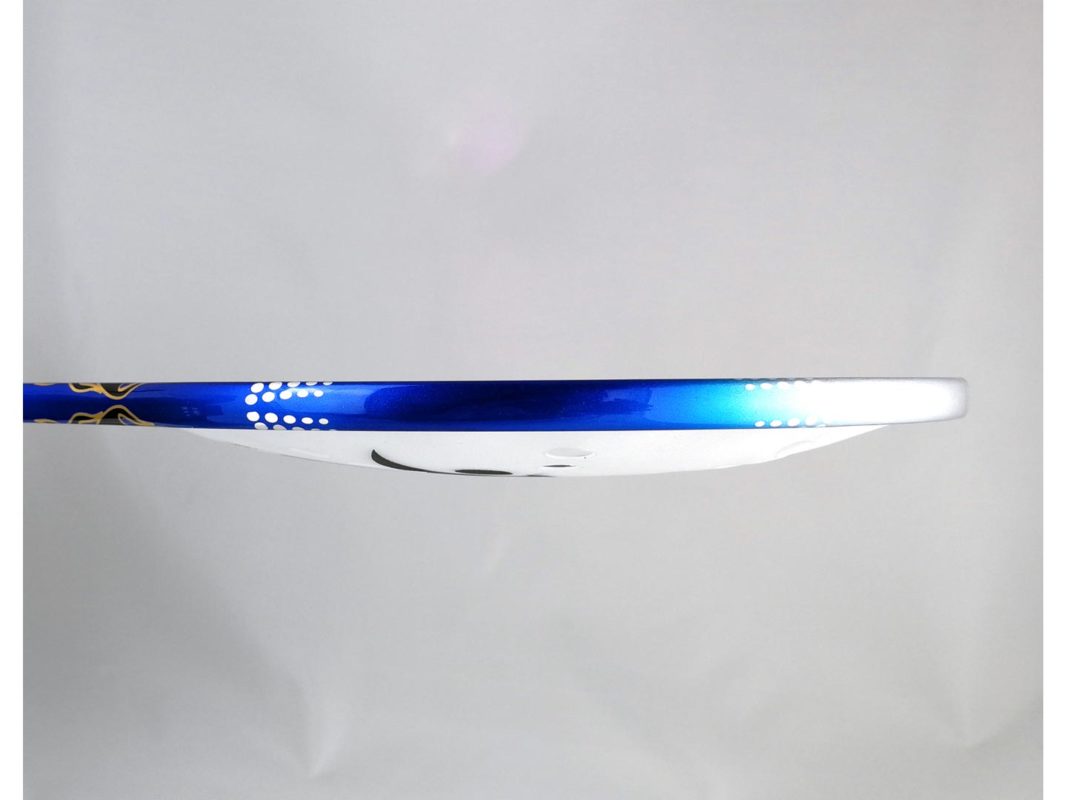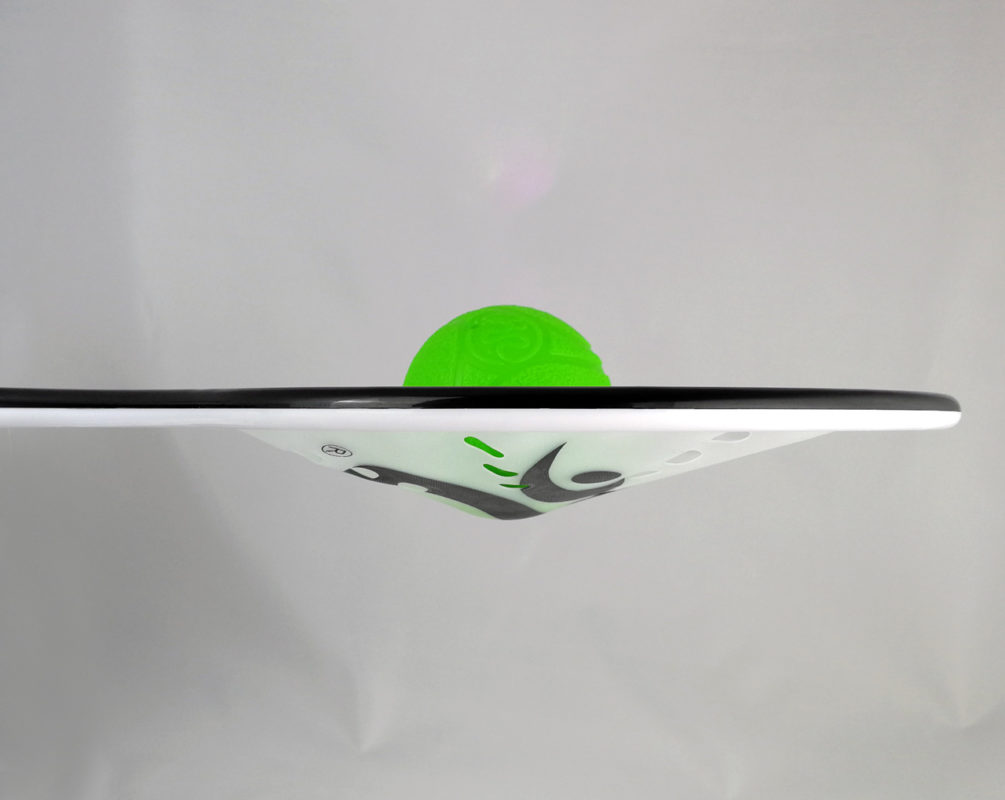BailongBall Rackets and Balls
- Superflex = This blade enables tricky solo play movements, so that the ball can be guided as if glued to the racket
- Easy = This blade is soft, elastic and rather saggy. It is well suited for beginners and for Soloplay
- Beginner = The blade sags more than 8mm but is not as flexible as the Easy blade. It is well suited for beginners trying out Multiplay and for Soloplay
- Advanced = The blade sags less than 8 mm and its nature is similar to the Beginner blade. It is well suited for Multiplay and for practiced Soloplay practitioners.
- Professional = The blade is made of rubber and rather tight. It is well suited to perfectionize the four BailongBall principles (and cannot be exchanged).
Of course, the BailongBall equipment is not only comprised of a racket but also of a ball. Since its patent application 1992, its inventor, Professor Bai Rong, has constantly improved versatility as well as its quality. This development was boosted by the success the sport enjoyed in its home country China, when it turned into a trend!
The weight of the ball has remained constant a 55 g. Initially sheathed in felt or leather, the hard inner part is known for its optimal feedback to the player. Especially for Multiplay softer inflatable rubber materials became popular, reducing the risk of injury, especially for beginners. Today’s silicon balls even come without valves.

Depending on size and material, rackets typically weigh between 90 g and 160 g. Rackets usually are 450 mm or 470 mm long. Through the introduction of separate disciplines, additional longer racket variants were admitted to Multiplay competitions, extending racket lengths to 510 mm and 540 mm, respectively. High end racket frames are made of carbon (one-frame), which makes them extremely light and resilient. Other variants like the compound-frames, consist of polycarbonate, plastic or acrylic glass. The aluminum or stainless steel racket heads are typically „cuffed“ to the grip by plastic material, requiring more delicate handling to avoid damaging.

In the course of development, also the blade material has undergone some changes and new variants have been introduced, bringing along changes in diameter, flexibility, surface structure and wholes/gaps. While initial rackets came equipped with tight rubber blades, today’s versions feature silicon blades of varying diameter and sagging.

BaiLo Rackets and Balls
The traditional BailongBall racket has a „little sibling“, called BaiLo. While BailongBall requires some space for playing, BaiLo allow for playing indoors, even in your home. It is also very handy, making transportation a lot easier. Last but not least, it does not feature a blade. The entire racket is made of the same material, making the playing surface even harder than any BailongBall’s blade.
Below, you find an overview of the blades currently available. (You can order BailongBall equipment at any certified TBBF Trainer in Europe or online through ![]()
The BAILO racket is made of odorless and sturdy plastic (no other materials currently available). The BaiLo ball is made of the same material as its „bigger BailongBall sibling“. Due to the slightly curved shape of the BAILO racket blade is now required to play consistently with one side. BaiLo equipment can give you a whole new feel for the game.

The compact shape of the racket (12.5cm x 32cm, compared to the Bailongball PL470-Easy) and the smaller ball makes it easy to take the equipment anywhere and play wherever you like. You can leave your racket bag at home.

Currently, the rackets come in three colors. Sizes and shapes are the same, no matter the color.







